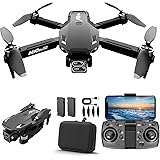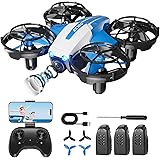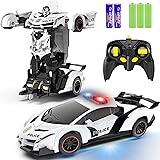Building a custom multirotor provides an unparalleled opportunity to tailor a drone to specific flight characteristics and performance goals. The video above introduces a fascinating personal project: a Happymodel HMF Y600 tricopter, meticulously assembled and integrated with an Eagle Tree Vector flight controller. This build showcases a thoughtful selection of components designed for both robust performance and an immersive FPV (First Person View) experience.
Tricopters, with their unique three-motor configuration, offer a distinct flight dynamic compared to traditional quadcopters. This specific Happymodel HMF Y600 tricopter project highlights the potential for custom builds to achieve impressive flight times and incorporate advanced features, setting a benchmark for enthusiasts looking to construct their own sophisticated aerial platforms.
The Foundation: Happymodel HMF Y600 Tricopter Frame Analysis
The core of any successful drone build is its frame, and the Happymodel HMF Y600 tricopter frame provides a robust and intelligent starting point. This particular frame emphasizes durability and functionality through its material choices and design principles.
1. **Carbon Fiber Construction:** The majority of the frame components, including the propellers, motor mounts, arms, and landing gear, are crafted from carbon fiber. This material is renowned in drone construction for its exceptional strength-to-weight ratio, which is critical for maximizing flight efficiency and impact resistance. Unlike some cheaper alternatives, carbon fiber significantly reduces overall weight while maintaining structural integrity, allowing for longer flight durations and improved maneuverability.
2. **Integrated Power Distribution Board (PDB):** A notable design feature of the Happymodel HMF Y600 is its lower center plate, which ingeniously doubles as a power distribution board. This integrated PDB streamlines the wiring process by providing convenient soldering pads for the ESCs (Electronic Speed Controllers) and other power-hungry components. This design choice mirrors the efficiency seen in some DJI Flingwheel frames, indicating a focus on clean, reliable power delivery and reduced clutter within the airframe.
3. **Versatile Gimbal Rails:** The frame includes 10-millimeter rails, separated by 60 millimeters from eye-to-eye, specifically designed for mounting gimbals. These rails cater to pilots who intend to use their tricopter for aerial photography or videography, providing a stable and secure platform for various camera setups. The ability to easily integrate gimbals expands the utility of the tricopter beyond recreational flying, opening doors to professional applications.
4. **Retractible Landing Gear:** Enhancing both aesthetics and functionality, the Happymodel HMF Y600 tricopter is equipped with retractable landing gear. This feature allows the landing gear to fold up during flight, removing them from the camera’s field of view, which is a significant advantage for clear, unobstructed aerial footage. Furthermore, retractable gear can reduce aerodynamic drag, contributing to slightly longer flight times and increased flight stability at speed.
Powering the Y600: Motors, ESCs, and Propellers
The propulsion system is paramount for any multirotor, directly influencing flight performance, efficiency, and responsiveness. The components selected for this Happymodel HMF Y600 tricopter demonstrate a careful balance between power and reliability.
1. **High-Performance Motors:** The tricopter utilizes SunnySky 3108, 900 kV motors. SunnySky motors are a popular choice among hobbyists for their proven reliability and performance. The 900 kV rating indicates the motor’s revolutions per minute (RPM) per volt, making them well-suited for larger propellers and efficient flight, especially when aiming for longer endurance. The 3108 designation refers to the motor’s stator dimensions, signifying a larger motor capable of producing substantial thrust.
2. **Reliable Electronic Speed Controllers (ESCs):** Powering these motors are Ready-to-Fly Quads 30-amp ESCs running SimonK firmware. SimonK firmware was revolutionary for its fast refresh rates, providing quicker and more precise motor responses, which translates to a more stable and agile flight experience. These 30-amp ESCs are rated to handle up to 4S LiPo batteries, offering ample overhead for the chosen motors and ensuring they can cope with peak current demands without overheating, thus enhancing the overall safety and longevity of the system.
3. **Efficient Carbon Fiber Propellers:** Complementing the motors are 12-inch by 5-inch carbon fiber propellers. Carbon fiber propellers are stiffer and lighter than plastic alternatives, leading to less flex during high-speed rotation. This rigidity results in more efficient thrust generation and reduced vibrations, contributing to smoother flight characteristics and clearer camera footage. The quick-release prop mounts simplify assembly and disassembly, a practical feature for transport and maintenance.
4. **Precise Yaw Control with Hitec HS-5665MG Servo:** Unique to tricopters is the need for a yaw servo to control the tail motor’s tilt, enabling rotational movement around the vertical axis. This Happymodel HMF Y600 build employs a Hitec HS-5665MG metal gear digital servo. The “MG” denotes metal gears, which are significantly more durable and resistant to wear and tear compared to plastic gears, ensuring long-term reliability for this crucial flight control component. Digital servos offer higher precision and holding power, translating to crisp and stable yaw responses.
Command and Control: Eagle Tree Vector Flight Controller & Radio System
The brains of this Happymodel HMF Y600 tricopter is the Eagle Tree Vector flight controller, a highly regarded system known for its versatility and integrated features. Paired with a robust radio system, it ensures precise command and comprehensive situational awareness.
1. **The Versatile Eagle Tree Vector Flight Controller:** The Eagle Tree Vector is celebrated for its ability to operate with various multi-rotors (tricopters, quadcopters, hexacopters) and even fixed-wing aircraft. This flexibility makes it a favorite among hobbyists who experiment with different airframes. Key features include a dedicated GPS module for accurate positioning, return-to-home functionality, and advanced flight modes. A current sensor is also integrated, providing real-time data on power consumption, crucial for monitoring battery life and overall system health during flight.
2. **Built-in On-Screen Display (OSD):** A significant advantage of the Eagle Tree Vector is its built-in OSD. This feature overlays critical flight data directly onto the live FPV video feed. Pilots can instantly view information such as altitude, speed, battery voltage, current draw, flight mode, and GPS coordinates. This immediate access to telemetry enhances situational awareness, allowing for safer and more informed FPV flying, especially during longer range missions or when experimenting with the tricopter’s limits.
3. **Hitec Optima 9 Receiver and Aurora 9 Radio:** The control link for this Happymodel HMF Y600 tricopter is established via a Hitec Optima 9 receiver paired with a Hitec Aurora 9 radio. The Optima 9 receiver supports telemetry, meaning it can send vital data back to the Aurora 9 transmitter. This real-time feedback loop allows the pilot to monitor parameters like receiver battery voltage and signal strength directly from their radio, providing an extra layer of safety and control. Hitec systems are known for their reliable signal transmission and robust build quality, ensuring a solid connection between pilot and aircraft.
Seeing the World: FPV and HD Camera Setup
To fully leverage the capabilities of this Happymodel HMF Y600 tricopter, a comprehensive FPV and HD camera setup has been integrated, providing both immersive piloting and high-quality recording options.
1. **Clear FPV Vision with Turnigy Camera:** For the FPV feed, a 700TVL Turnigy camera is used, equipped with a 2.1-millimeter lens. The 700TVL (Television Lines) specification indicates a good level of detail for real-time video transmission, allowing the pilot to navigate effectively. The 2.1-millimeter lens offers a wide 150-degree field of view (FOV), which is highly beneficial for FPV flying. A wide FOV provides better peripheral vision, reducing the risk of collisions and enhancing the sense of immersion, making the pilot feel more connected to the aircraft’s movement.
2. **Robust Video Transmission with Boscam TS832:** The live video feed is transmitted via a Boscam TS832 video transmitter (VTX). This VTX operates on the 5.8 GHz frequency band, a common choice for FPV due to its ability to carry more video bandwidth and its general acceptance for short to medium-range flying. With 32 channels and a powerful 600 milliwatt (mW) output, the TS832 ensures a strong and clear video signal, reducing the likelihood of interference and dropouts. The signal is broadcast through a four-blade cloverleaf antenna, a popular design known for its omnidirectional signal pattern and excellent polarization purity, which helps minimize multipath interference and maintain video clarity.
3. **High-Definition Recording with Mobius Camera:** For capturing actual flight footage in high definition, a Mobius camera is mounted. Mobius cameras are compact, lightweight, and versatile, making them ideal for drone applications where weight and size are critical. Like the FPV camera, it’s equipped with a wide-angle lens to capture expansive aerial views, providing compelling footage of flights and the surrounding landscape.
Unpacking Performance: Flight Times and Battery Configurations
A key indicator of a multirotor’s efficiency and practical utility is its flight duration. The Happymodel HMF Y600 tricopter project demonstrates impressive flight times through strategic battery selection and management.
1. **Initial Performance with 8000mAh Battery:** During initial line-of-sight flights, the tricopter achieved over 15 minutes of flight time using an 8000mAh 3S ReadyMadeRC battery. An 8000mAh capacity provides substantial energy storage, and a 3S (11.1V) LiPo configuration is a common choice for balancing power and weight in mid-sized drones. Exceeding 15 minutes with a single battery of this capacity is a strong performance metric for a custom build, suggesting an efficient propulsion system and optimized component selection.
2. **Extended Endurance with Parallel Configuration:** To push the boundaries of flight duration, the builder experimented with two MultiStar 3S 5200mAh batteries connected in parallel. Using a parallel adapter, the total amperage effectively doubles from 5200mAh to a combined 10400mAh. This increased capacity resulted in an impressive 18 minutes of flight time. Running batteries in parallel increases the total available capacity while maintaining the same voltage, directly translating to longer flight endurance. This demonstrates a practical method for maximizing flight time without altering the fundamental voltage requirements of the power system, a common strategy for achieving extended missions with the Happymodel HMF Y600 tricopter.











